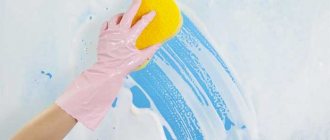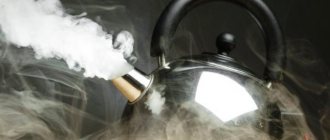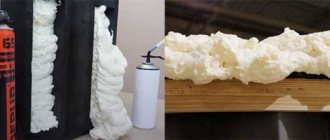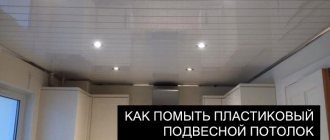Despite the wide variety of options provided by manufacturers to ensure high-quality and inexpensive heating of premises, the fireplace not only does not lose its position in fashion, but also joins the circle of true connoisseurs of this aristocratic element of home improvement. Moreover, in appearance and technical features, modern models vaguely resemble those classic fireplaces that appear in our imagination.
One of the distinctive elements is the transparent door, which provides reliable fire protection. Transparency is achieved through the use of fire-resistant glass. Thus, all residents can freely observe the living flame that is formed during the combustion of fuel.
An obligatory negative consequence of the combustion of any fuel is the gradual appearance of soot and carbon deposits on the glass. To restore the original aesthetic appearance, it is necessary to clean the glass of the fireplace from soot. This procedure is labor-intensive and unpleasant. But we will give a few tips that will smooth out all the negative impressions of servicing your fireplace.
Carrying out wet cleaning of the fireplace
spring-cleaning
The main part of cleaning, the most labor-intensive, consists of washing soot from the ceiling and walls. Here you will have to use a large amount of warm water with a rag. You will have to constantly change rags and water as they become dirty. The work must be done slowly and thoroughly, so that after washing the wall looks clean and free of soot. You can't do this with water alone: you'll need special detergents.
DIY cleaning liquids
Folk remedies are used to clean smoked walls. They can be found at any housewife. But they are used according to the rules in order to get a positive result from cleaning.
Soda ash solution
Soda ash is poured into hot water. For 0.5 liters, 2 tablespoons of the product are enough. Wet a rag or brush and rub it along the walls with sweeping movements. You cannot rub soot into surfaces, otherwise it will be difficult to wipe it off later.
Dish detergent solution
Soap solutions are prepared from warm water with the addition of dishwashing liquid. In 5-7 liters you need to dissolve 1 tablespoon of concentrate. First, wash the ceilings, then the walls and floors with rags. But at the end you should dip the brushes in the solution and rinse them clean.
Toilet bowl cleaner solution
It is necessary to choose alkaline compounds, since soot in the room becomes greasy to the touch and is difficult to deal with. If you use Domestos, it will not only clean contaminated surfaces, but also disinfect them and eliminate unpleasant odors.
Removing dirt using folk remedies
The most unpleasant consequence of fuel combustion is a dense layer on the glass, representing fumes and soot. Due to the fact that the basis of this plaque is creosote, which attracts soot particles like a magnet, simple treatment with a damp cloth will not help here. We have to resort to accumulated experience, because we have always encountered similar problems.
- If the glass has become smoked recently, and the soot layer has not had time to dry in the creosote, then it is quite possible to use self-cleaning, which consists of burning dry hardwood firewood with plenty of air access. To do this, you need to open the blower door all the way. At high temperatures, soot particles burn out and the glass is freed from carbon deposits. But this method is good only if you promptly discover that the glass needs to be cleaned.
- Mix equal parts of water and vinegar. The resulting solution is poured into a spray bottle. The fireplace door will have to be removed and placed on a horizontal surface. A layer of newspaper is applied to the smoked areas. These newspapers are soaked in the vinegar solution and left for some time. Then the glass should be treated with wet newspapers as a cloth.
Be sure to use rubber gloves while working
Sometimes ash taken from the ash pit is used to clean glass. It is known that it forms an acidic environment. Under the influence of chemical reactions, carbon deposits are broken down and the surface can be washed. For ease of work, use a sponge. The ash should not contain dirt, otherwise the glass may be scratched. Ash is poured onto a moistened sponge and the surface is treated with gentle movements. If necessary, wash the sponge well and add a new portion of ash again. Another recipe for preparing a fireplace glass door soot cleaner is based on mixing ammonia, vinegar, lemon and soda. The soot layer must first be moistened, after which we can easily clean the soot
It is important to remember that an increased concentration of ammonia will make it possible to make a more active solution, and cleaning the glass will be simplified, but the ammonia will quickly evaporate, and this fact will have to be taken into account.
Removing contaminants using ammonia
To clean soot on glass, a solution of: ammonia, soda, vinegar and lemon will help.
Ammonia does an excellent job of removing soot. Cleaning glass with its help occurs in several stages:
- Wait until the fireplace cools down. The door must be cold.
- Dilute ammonia with water in a container, add a little vinegar, and pour the resulting product into a spray bottle.
- Spray the liquid onto the glass and use paper towels to wipe away any cloudiness and remove soot. If the contamination is long-standing, you will have to make an effort or spray the solution on the stains and leave for 5-10 minutes. During this time, the alcohol will be absorbed into the soot, and it will be much easier to remove it.
Ammonia can not be diluted with water, but used in its pure form. But in this case, it will quickly evaporate without removing the contamination. But by soaking a napkin in ammonia, and then dipping it in ashes and wiping the glass, you can achieve success in a few minutes.
Cleaning glass: the traditional method
Cleaning the glass door with ash
Ash is an ancient and effective glass cleaner. After the fireplace has cooled completely, take some white ash, place it in a container and dilute slightly with water.
Mix until you get a paste. We wipe glass surfaces with ash. You can use a microfiber cloth or old newspaper. After treatment, wipe the surfaces with a clean damp cloth.
Ash can not only clean glass, but is also useful for washing dishes. This environmentally friendly and safe product will replace household chemicals. It will easily wash baking trays and baking containers, cast iron, enamel and metal, and glassware.
Ash effectively copes with soot and soot, burnt marks and grease, even old ones. How else can you wash dishes from grease and stains, see here.
How to clean a chimney?
In order to fully clean the fireplace from the black deposits that have formed on its walls, this procedure should be started by cleaning the chimney. This procedure can be carried out in several ways:
- mechanical cleaning;
- using a special cleaner for cleaning fireplaces.
If the chimney is direct-flow, then it can be cleaned through the firebox. If the chimney has two, three or four elbows, then this procedure is best carried out from above.
So, mechanical cleaning of the chimney of a fireplace with a direct-flow outlet should be carried out according to the following instructions:
- Using a synthetic or lint brush, clean the pipe walls from the top layer of soot; to clean narrow passages, you should use a brush, but cleaning the fireplace chimney does not end there.
- In addition to soot, resins can accumulate on the chimney pipe in the form of hard lamellar deposits. You can remove them using a metal spatula.
- After the resins have been removed, you need to take a special chimney brush, which should be several centimeters in diameter larger than the pipe, and use it to remove the remaining soot, making vertical movements up and down inside the pipe.
To clean a knee chimney, you must first close all the doors in it and open the damper completely. Having climbed onto the roof and assumed a stable position, you should use large-diameter brushes and pipe cleaners to clean the pipe from carbon deposits. It is better to clean hard-to-reach areas with transitions with a brush attached to a flexible cable, with which you can change the direction of its movement and simultaneously scroll in different directions.
If a large blockage has formed inside the chimney, a brick has fallen out, or large debris has entered, then to eliminate them it is recommended to use a special core attached to a cable; apart from this, it is not recommended to use anything else. Having climbed onto the roof, you should throw the cannonball into the pipe, which, due to kinetic attraction, will break any jam.
Chemical cleaning will be effective only if there are no dense oily accumulations on the inner walls of the pipe.
To reduce creazote deposits and clean the chimney, a special “Chimney Sweeper” product has been developed, which destroys soot when burned. After this, nothing additional needs to be done, except for cleaning the grate from soot and the glass door of the fireplace from soot.
Grill cleaners
Vinegar-soda mixture
The firewood grate also becomes clogged with soot over time, which reduces the level of airflow and makes it much more difficult to light the fireplace.
To clean the firewood grate, you should first prepare one of the cleaning solutions:
- In a 10-liter bucket of water, dilute 6-7 tablespoons of a chemical to dissolve solid mineral contaminants.
- If such a substance is not available, then you can simply dilute a glass of bleach or bleach in 4 liters of water.
- Another simple solution for cleaning fireplace mantels is a vinegar-soda mixture, which is made by mixing equal parts baking soda and vinegar.
Using a brush and the prepared solution, clean the grate from soot, making vertical movements from top to bottom.
After the soot is finished, you need to wash the firebox, chimney and fireplace grate with warm water and a soft sponge.
Why does soot appear?
If soot and soot accumulate over a short period of time, you need to find out the cause of this problem. By identifying and eliminating the cause, you will not have to constantly clean the glass. In a gas fireplace, such causes include clogged burners or improper installation of jets.
Fireplaces that operate on propane become polluted faster than gas fireplaces. This happens due to low-quality fuel, clogged burners, or breakdown of the control tank. But wood-burning fireplaces and stoves are more susceptible to soot than others. The appearance of plaque is caused by coniferous trees, the absence or improper functioning of air ducts and a dirty chimney.
If the glass becomes dirty less than every two weeks, the fireplace is functioning correctly. Here soot and soot accumulate gradually. As a result, contaminants appear that need to be removed.
Causes
Before you begin to eliminate the consequences, namely, contamination of the fireplace glass, it is important to understand what is the primary cause of soot formation. Correctly identifying the cause will help prevent future contamination. What the fireplace uses, the type of fuel, plays an important role. However, often the cause of soot formation is associated with a much more serious problem - contamination of the chimney.
Gas fuel
If the generator of the fireplace is gas fuel, then soot on the glass indicates clogging of the burners or incorrect position of the jets. This leads to a violation of the gas-air ratio, which in turn causes soot and soot to settle on the inside of the fireplace glass.
Propane
Fireplace stoves operating on the basis of propane are much more susceptible to the formation of soot than gas stoves. As a rule, the reasons lie in the quality of the fuel, clogged burners or damage to the tank. Cleaning the burners and replacing the current fuel with a cleaner option will help reduce the amount of pollution.
See also
How to clean a bicycle chain with your own hands and the best cleaners
Wood burning
If the fireplace runs on wood, you should not be surprised at the appearance of soot. This is due to the fact that softwood trees, commonly used for heating, tend to be “smoked.” The reason may also be the lack of holes for oxygen.
Cleaning the walls in the bathhouse
Most often, those objects where there is a constant thermal load are exposed to soot and soot. It is not so easy to wash them off. You can remove soot from wood using one of the following methods:
- Mechanical. Wood perfectly absorbs odors, so in order to completely remove soot or soot, you need to completely scrape it off with any hard object or sanding machine.
- Another way to remove soot from walls is to create a cleansing scrub designed for treating wooden surfaces. It may be based on sand or crushed brick. It should be mixed with a small amount of water, and the resulting slurry should be used to clean the damaged surfaces.
- Another way to wash soot in a bathhouse is to use ready-made products. It is necessary to purchase only those household chemicals that are suitable for treating the internal surfaces of baths. Most often, they contain alkaline substances. They are not absorbed into wood and will begin to affect the human respiratory system when heated.
Getting rid of soot can be difficult. In addition, during the cleaning process you can damage the walls, floor or ceiling, and it will be almost impossible to get rid of the resulting defects. Do not allow soot to appear. To do this, you need to wipe the surfaces with soap and water after each visit to the bathhouse or sauna.
How to care for a fireplace
Owners of a fireplace with a closed firebox have one problem that arises during its use. The glass of such a firebox gets very dirty from burning, which is why it needs to be washed frequently. Soot and soot will cling to the glass with any type of fuel (it can be gas or wood). It’s very rare that you can clean glass quickly and without much effort, and this spoils your mood. First you need to understand the cause of soot.
Gas fireplace
Often, people who don’t like to waste time lighting wood don’t want to go through the hassle of cleaning out the ash and prefer gas fireplace options. Such a fireplace does not need to be cleaned very often, since good quality gas should not stain the door. If soot appears, then you should look for the cause in the incorrect proportion of gas and air that enters the combustion chamber; it is also worth checking the burners - they may become clogged, and the jets may be in the wrong position.
Fireplace burning on propane
Soot appears near a fireplace running on propane for only two reasons. This may be due to an imbalance in the proportion of air and fuel, or the use of low-quality materials for the firebox. An incorrect gas/air ratio can result from clogged jets or gas nozzles.
Glasses near wooden hearths become dirty much more often. Most of the soot appears from coniferous wood, since they contain large amounts of resin. If you systematically clean the chimney and open the damper, the glass will not become dirty so often, but it will still happen. Owners of such fireplaces should be aware that they will have to clean the glass more than once, and this process will be labor-intensive.
Wood-burning fireplaces develop a sticky coating when they burn, which consists of soot and creosote; it is this that settles on the glass, after which it attracts particles of ash, which have to be washed. Subsequently, the fireplace cannot cope with its main purpose, it begins to heat poorly, the appearance becomes unattractive and the glass turns from transparent to cloudy. In such a situation, it is necessary to use a cleaning agent.
Door with glass in a closed firebox: the main reasons for use
Nowadays, stoves and fireplaces with a closed combustion chamber - that is, with a glass door - are in predominant demand. The choice of this type of fireplace was dictated by several reasons:
- Increased level of fire safety compared to open fireboxes
- Higher heating characteristics of the equipment - heat does not go “waste” through an open firebox and warms the room more efficiently
- The opportunity to admire live fire safely
- Protecting children and pets from exposure to open flames
- Clean space next to the fireplace
- Possibility to turn a closed fireplace into an open one and vice versa at any time by opening or closing the door
The reasons listed are quite significant - fire safety and heating efficiency are really of great importance to users. But such advantages also have their price - since the glass of the door is a natural barrier between the fire and the room, it takes on not only temperature loads, but also various contaminants formed during the combustion process. Eliminating such formations is not difficult, you just need to do it wisely and with some knowledge, which will help avoid damage to the glass and will not spoil the panorama of the flame in the future.
Useful tips
Liquid for cleaning fireplace glass may not always be effective. To make caring for your heating unit simpler and more productive, we recommend that you familiarize yourself with the following tips:
- After the fireplace has finished operating and has partially cooled down, wipe the door with a dry rag or paper towel;
- If the glass of the fireplace turns black, give preference not to expensive products, but to simple soap. Once the door is completely clean, apply a small layer of soapy water to the glass and place it in place. As the fireplace heats up, self-cleaning will occur, and all stains from the soap solution will be removed naturally;
- Without knowing how to wash the glass of the fireplace, you can think ahead and organize its use. For example, using exclusively clean and dry wood for heating makes the occurrence of plaque, soot and soot less frequent;
- The composition used for cars, and more precisely for cleaning and polishing chrome elements, is effective and proven. This composition must be applied to contaminated areas, then wipe dry with a simple napkin or cloth;
- If you don’t know how to clean soot from the glass of a fireplace, you can initially anticipate the occurrence of this problem. Try a method called “clean glass”. To do this, while the heating unit is operating, leave a small gap on its inside. Thus, the air passed through during operation will form a kind of barrier and protection against contamination, or you can take care of this in advance and keep the glass clean in simple ways.
Give preference to products with safe chemical composition
Furnace glass covered with a thick layer of soot
Chemically active agents
Modern technologies for using household chemicals provide a variety of substances to clean the glass of a fireplace from soot, and it is not at all necessary to look for products for glass of fireplaces and stoves in stores, although one must pay tribute to their effectiveness. You can use microwave cleaning liquid, pastes and powders to clean dishes.
Each cleaning product has its own specific composition, the manufacturer indicates it on the packaging. You must read it before using it for its intended purpose. After all, abrasive substances, which are often used in the composition, can cause small scratches on glass, and some aggressive substances have a destructive effect even on glass.
Oven cleaners work well
The purchased special cleaning agent for fireplace glass requires a specific method of application. Be sure to find information about this issue and read it.
Preparing for cleaning
Cleaning soot from a fireplace is quite a dusty job. Therefore, before starting it, it is recommended to wear household gloves to protect the skin of your hands.
Preparing to clean your fireplace
It is recommended to carry out cleaning work no earlier than 10-12 hours after the last use of the fireplace structure.
You should first cover all interior items with cellophane film to protect them from dust. You need to spread old newspapers on the floor surface.
For soot, prepare an old bucket or several garbage bags.
Once the room is completely prepared for dusty work, you can begin cleaning the fireplace from soot.
First, you should remove all the ash from the firebox of the fireplace structure using a scoop or spatula. Then you need to remove the firewood grate to clean the furthest corners of the fireplace from ash. After this, you can begin to remove the soot.
How to clean soot from fireplace glass video
And a small short video that gives a video answer on how to clean soot using ash from the firebox. Perhaps someone still prefers “folk” methods.
PS After watching this video once again, I finally understood why this method is called folk. It’s not at all because the peasants of some Ryazan or Tula province loved to clean the glass doors of their fireplaces on long winter evenings, and exclusively with ash. This method is simply free! And that means it’s folk.
Tags
fireplace tips
Basic cleaning methods
There are many ways to clean fireplace glass from dirt. This can be done using household chemicals or one of the traditional methods. When choosing a means of combating soot, it is necessary to understand how severe the pollution is, as well as how long ago it was formed.
Cleaning agent
The departments of household chemicals stores are overflowing with a variety of products designed to clean the fireplace.
When choosing a cleaning product, it is important to pay attention to the composition: it is better to refuse a product that contains components that can harm the glass surface. You can clean the glass of the fireplace using available detergents, for example, for washing dishes or kitchen utensils
Ammonia
Ammonia easily removes soot. Cleaning the glass of a fireplace using alcohol follows the following rules:
- The fireplace must cool completely.
- Ammonia is diluted with water. Adding a few drops of vinegar will be effective. The resulting mixture can be poured into a spray bottle.
- The solution is sprayed onto the glass and then removed with paper napkins. If the stains are old and difficult to clean, you will need to wait 10-15 minutes. During this period, the alcohol will penetrate the soot particles, making the removal process much easier.
The use of ammonia in its pure form is not prohibited. However, this may not be effective as the alcohol evaporates quickly from the surface.
Fire at full power
Carbon deposits on the glass of the fireplace can be removed using high heat. You will need dry firewood to build the fire to its maximum capacity. During the combustion process, particles of soot, soot, and soot are burned, and the glass is cleaned. At the same time, the chimney is also cleaned, which has a beneficial effect on the fire hazard level of the fireplace.
Newspaper and ashes
To clean glass in this way, you need to moisten a newspaper in water and apply ash to it. Soot will be easily removed in this way if more than 2-3 days have passed since the formation of soot. Use newspaper with ash to thoroughly rub the stained areas, then wipe with dry paper or a rag. Old stains will not respond to this method.
Blade or sharp-tipped tool
You can resort to radical methods - removing soot using a blade or any tool with a sharp tip. With this method, you should follow safety rules to avoid cuts. It is worth controlling the degree of pressure - scratches may remain on the glass. It is better to resort to such methods to remove only parts of particularly severe contamination.
Water and vinegar
You can remove soot using a mixture of water and vinegar. The solution is poured into a spray bottle. The fireplace door is first dismantled and laid out on a flat surface. Newspapers are laid out on problem areas and soaked with solution on top. After some time, the glass is wiped with wet newspapers.
Ash from the ash pit
This cleaning method is one of the most popular. In addition to the ash from the ash pan, you will need a bucket of water, a sponge, and paper towels. Hands must be protected with rubber gloves.
- Soak the sponge in water and squeeze out.
- Apply ash to the sponge.
- Use a circular motion to wipe away the soot.
- Wash the sponge and glass to remove any remaining dirt.
- Wipe with a dry paper towel to achieve full effect.
A mixture of ammonia, vinegar, lemon and soda
The mixture of the listed components perfectly fights pollution of any complexity, of any age (including old ones). The soot layer must first be moistened with the solution and left for 15-20 minutes to allow the active substances to penetrate into the dirt. After this, all that remains is to wipe the glass without additional effort. The higher the concentration of ammonia, the higher the activity of the solution, the easier the cleaning.
How to minimize the appearance of soot
To slightly reduce the level of soot on the doors, and not have to wonder how to clean the glass of the fireplace, you can try to reduce the amount of dirt formed. To do this, you need to follow a few tips.
- Use only high-quality fuel. Be sure to eliminate the presence of moisture in the firewood. Use deciduous species, since coniferous trees contain a lot of resin, which accumulates on the glass and burns. Such contamination is then very difficult to wash off.
- Wipe down the fireplace door after each fire. This way you will remove a minimal amount of soot every time and deal with the problem in 1-2 minutes. If carbon deposits accumulate, more time and effort will have to be spent.
- When purchasing a fireplace, pay attention to the presence of such an additional function as a self-cleaning door. With this innovation, you will be able to avoid dirty work altogether.
- When starting the slow combustion system, try not to completely shut off the air supply to the firebox. Otherwise, the fuel will begin to smoke rather than burn. With a decrease in heat transfer, much more carbon deposits appear.
Regular maintenance of the fireplace will make it possible to avoid rough cleaning of its surfaces.
Fireplace care option - choosing the right fuel Source gazovshik.pro
Old ways
There are several options for getting rid of soot, differing in their effectiveness and labor intensity. They must be used depending on the amount of soot on the walls of the firebox and pipe. But cleaning the fireplace should be planned in advance and not begin until 24 hours after the wood has stopped burning.
Our ancestors did not know how to clean a chimney in a fireplace using chemical reactions, but they had sufficient knowledge to carry out these procedures using available means.
- While the wood was burning, the fuel was generously sprinkled with salt. It should be noted that this method could not solve the problem of an excessively clogged pipe channel and was of a preventive nature. Salt was used in fireplaces and bathhouse stoves. Its periodic use significantly increased the time until the next mechanical cleaning.
- Different types of wood for firewood contain different amounts of resins. So, coniferous trees should not be used as fuel. They produce a large amount of deposits and contribute to the rapid formation of congestion in the chimney. Deciduous wood is more suitable for these purposes, and aspen firewood has the quality that it produces a lot of heat. Therefore, a certain amount of aspen wood was burned to clean the fireplace. The high temperature burned away the soot, freeing the channels from soot. But this method was used under close supervision, since there was a high probability that the high temperature could lead to a fire.
Potato peelings, or rather the starch in their composition, have good cleaning ability. When the peelings were burned (usually burned near a bucket), the released starch softened the soot, and it fell down to the bottom of the firebox.
Prevention measures
A fireplace is not only a stove, but also an interior solution
Therefore, it is important to monitor the appearance of the glass. It is worth noting right away that it is impossible to completely avoid the formation of soot, no matter what methods are taken
The operation of the furnace system is associated with the formation of soot. In this case, to prevent contamination, the following rules should be observed:
The fuel must be of high quality - you should not skimp, it is better to give preference to purified, proven types. Firewood must be loaded correctly: horizontally, ignited from above
When using firewood, it is important to ensure good chimney removal and regularly monitor the operation of the chimney. It is important to regularly ventilate the room. Sufficient amount of air - the room where the fireplace is installed should be well ventilated, this will not only help avoid oxygen problems, but will also allow the fuel to burn better. High-quality chimney
An additional damper may need to be installed. It is worth cleaning the chimney periodically. It's better to have professionals do this.
Do not delay cleaning when soot forms on the glass. This will allow you to quickly and effortlessly deal with contamination and avoid microdamage to the glass surface. The sooner you take action, the less soot will penetrate inside.
Despite the wide variety of options provided by manufacturers to ensure high-quality and inexpensive heating of premises, the fireplace not only does not lose its position in fashion, but also joins the circle of true connoisseurs of this aristocratic element of home improvement. Moreover, in appearance and technical features, modern models vaguely resemble those classic fireplaces that appear in our imagination.
An obligatory negative consequence of the combustion of any fuel is the gradual appearance of soot and carbon deposits on the glass. To restore the original aesthetic appearance, it is necessary to clean the glass of the fireplace from soot. This procedure is labor-intensive and unpleasant. But we will give a few tips that will smooth out all the negative impressions of servicing your fireplace.
Store-bought cleaning products
Today there are a large number of specialized cleaning products on the market that allow you to quickly and effectively remove dirt from the glass of the fireplace door. Cleaning products are sold in the following forms:
- liquid
- in the form of a spray
- in tubes
- in granules
Before purchasing a product, make sure it has a safe chemical composition in the correct balance. The product should quickly clean the glass surface - the most effective products begin to act immediately after application. A quality product should not leave scratches or other damage on the glass.
Among the large assortment of glass cleaners for heating appliances, it is best to choose those recommended by the manufacturer of the fireplace or stove you are using. It is very important that the composition of the cleaning product is compatible with the materials from which the heating device is made. The selection can also be made based on user reviews.
The best way to choose the appropriate type and brand of cleaning product is to take professional advice from the store manager. A specialist will help you make the right choice based on the technical characteristics of your heating device, your individual mode of operation of the fireplace and the types of materials from which the fireplace is made.
Other methods
You can clean glass without using additional products. Simply turn the fire on high so that the hot flames burn away the soot that has formed. This method helps not only to remove dirt, but also to keep the chimney clean. Moisten a newspaper with water and dip it into the ashes at the bottom of the stove. Apply to dirt and rub until soot and deposits are removed. Then wipe with a dry cloth or napkin. Cleaning will take a long time and hard, but the result will certainly please you. If no product helps fight stains, use a blade or tool with a sharp tip and scrape off the stains until they disappear completely.
Please note that there is a risk of damaging or scratching the glass.











